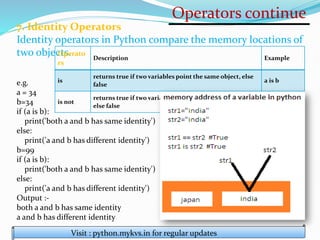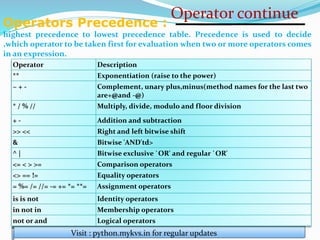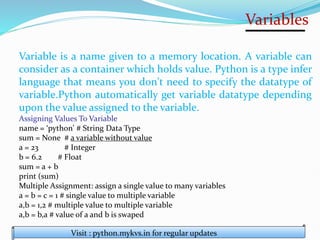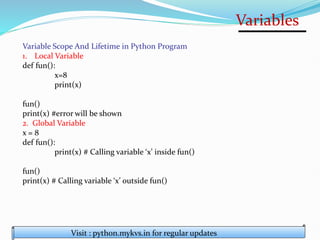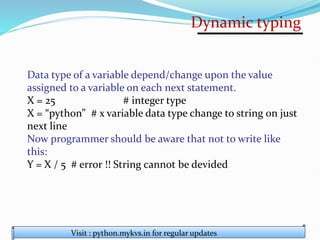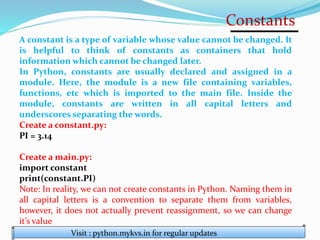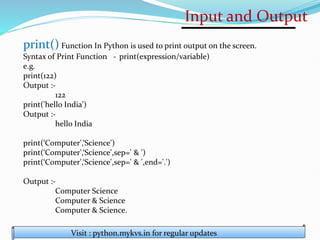The document provides an overview of basic Python programming concepts including the structure of a Python program, data types, variables, operators, expressions, statements, functions, modules, and libraries. It discusses Python syntax elements like indentation, keywords, identifiers, literals, and escape sequences. It also covers basic Python programming concepts like input/output, operators, variables, and data types. The document is intended as an introductory guide to the basics of Python programming.

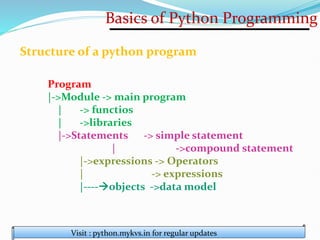

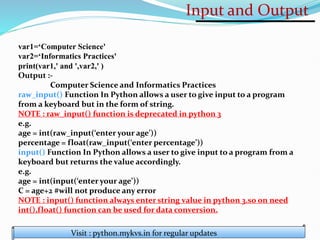

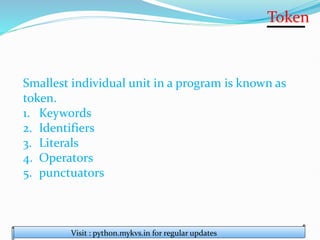
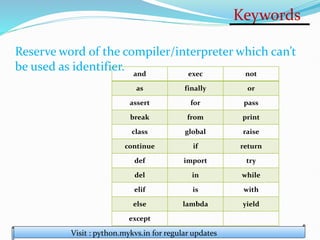
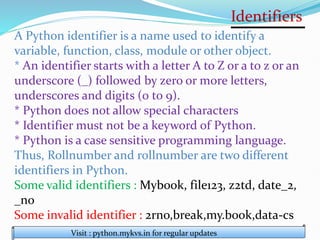
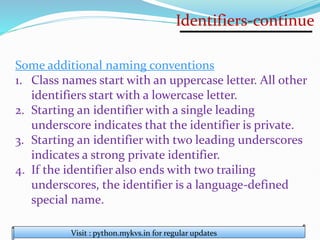
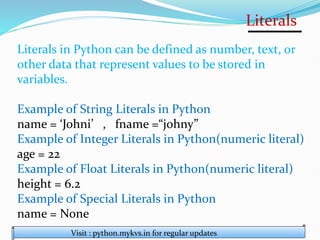
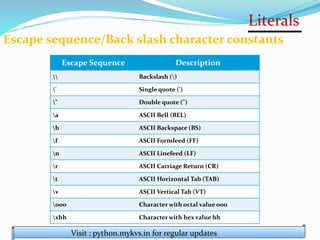
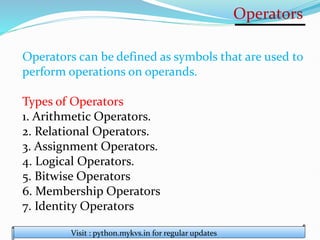
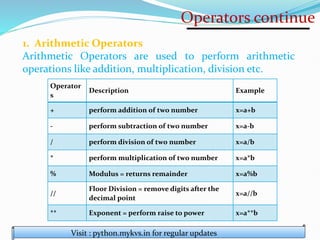
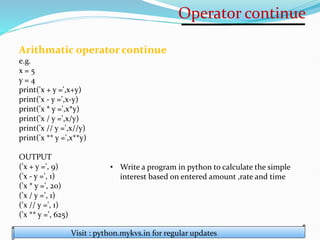

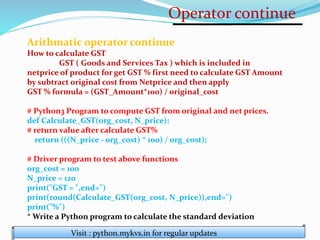
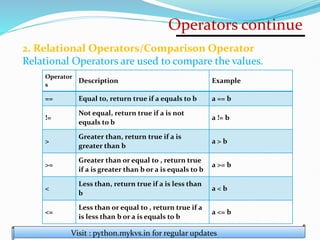
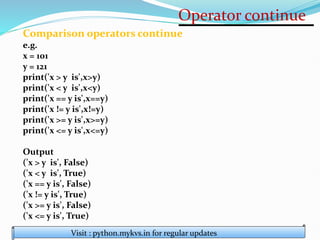
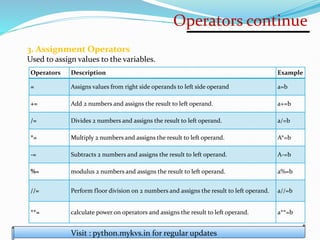
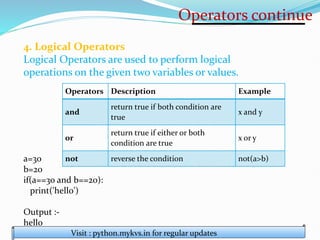
![Operators continue
Visit : python.mykvs.in for regular updates
6. Membership Operators
The membership operators in Python are used to validate
whether a value is found within a sequence such as such as
strings, lists, or tuples.
E.g.
a = 22
list = [22,99,27,31]
In_Ans = a in list
NotIn_Ans = a not in list
print(In_Ans)
print(NotIn_Ans)
Output :-
True
False
Operato
rs
Description Example
in return true if value exists in the sequence, else false. a in list
not in
return true if value does not exists in the sequence, else
false.
a not in list](https://image.slidesharecdn.com/basicsofpythonprogramming5-231203133952-7f44dc42/85/basics-of-python-programming5-pdf-21-320.jpg)
